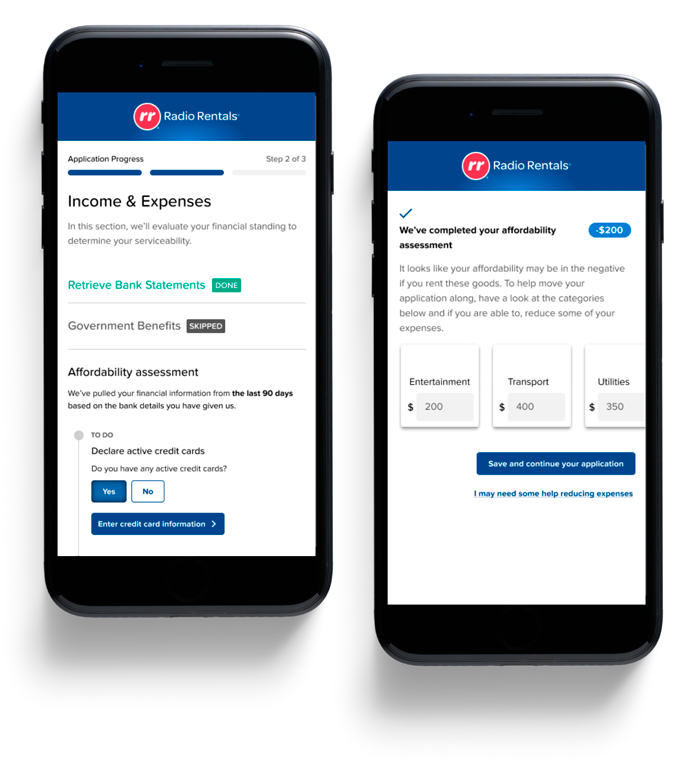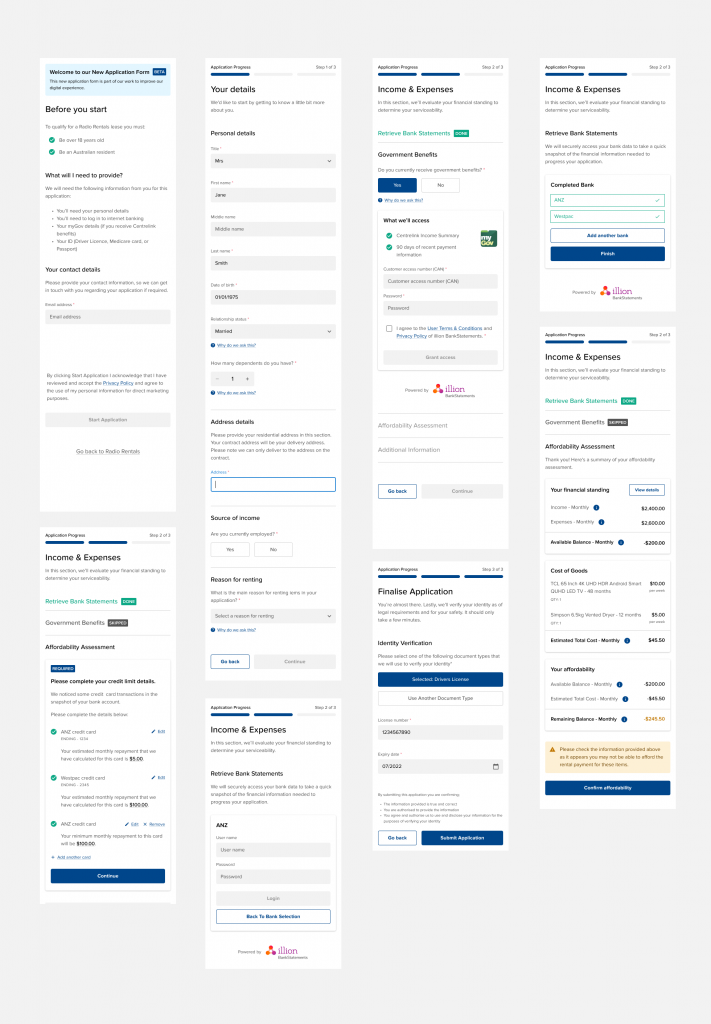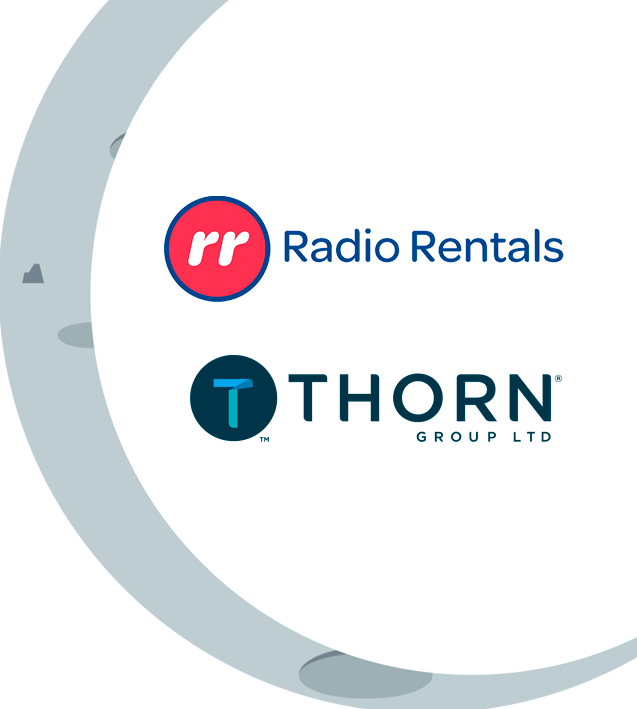- Services
Product Management
Product Development
Product Capability
- Client Stories
- Insights
- About
- Contact Us
Product Management
Product Development
Product Capability
Thorn Group, Radio Rentals Mobile Experience
An improved user onboarding experience that led to an increased application completion rate, a reduction in errors, and technical independence and flexibility for future development initiatives.
Thorn Group is a financial services organisation providing consumer and commercial financing solutions, and leasing home technology and appliance products through its Radio Rentals brand.
With COVID-19, Radio Rentals has seen its bricks-and-mortar stores close with customers instead using their online store. With digital adoption increasing, Radio Rentals needed to enhance their customer’s online experience to stay competitive in the market and with the goal of increased customer conversions.
Thorn invited Terem to help drive their product roadmap and Agile transformation journey by setting up their first product development team. In addition to establishing ways of working for product development, Terem was engaged to uplift their digital capabilities, and UX design.
A Terem team designed and delivered a new and improved user onboarding experience via a next-generation version of the Radio Rentals online application form. This led to an increased application completion rate, a reduction in errors, and technical independence and flexibility for any future development initiatives.
The new application form decoupled the existing application form from both the eCommerce platform and the credit-decisioning system. By reducing the coupling to these two systems, the application form experience was improved such that the application completion rate increased, and input errors that would impact the credit approval rate were improved.
Owning a decoupled front-end experience with supporting services has positioned Thorn to more easily expand on the user experience, allowing them to more effectively introduce and test new features in the future. This application form will eventually be the foundation for introducing chat functionality, more advanced bank statement categorization functionality, in-session contract signing, and many other features.
Taking ownership of the application flow has also assisted Thorn in reducing its reliance on a single vendor. Architectural choices have made it easier to swap systems out in the future if required.
Terem architected these systems to provide an extensible set of originations services that can be used to facilitate the launch of new brands and financial products should the business decide to broaden the consumer finance offerings outside the Radio Rentals brand.
With an Embedded Team
Terem provided a product team of between 9-12 people across Engineering, Product, and Delivery disciplines to set up product delivery capabilities at Thorn and to deliver the high priority roadmap items within a 6 month period.
Terem led a Definition and Setup phase before commencing Delivery. Our Solution Architect and Technical Lead worked collaboratively with the Thorn team to understand pain points and target outcomes, to iterate on a solution design that would achieve the business objectives. A comprehensive business analysis was conducted on each roadmap item before breaking the components down into workable user stories.
Iteration on design and development was made from feedback gained from ongoing user research and user acceptance testing. There was also close collaboration on release and testing strategies and creating continuous integration/continuous delivery (CI/CD) pipelines using BuildKite. BuildKite allowed for less manual effort, easier rollbacks, faster and consistent delivery, risk reduction in deployment and releasing, and an increase in team transparency and accountability.
With Team Capability Uplift
Terem set up Thorn’s first agile team to uplift the product development capability of Thorn Australia’s current IT and business teams, and future product development teams.
Robust Ways-of-Working were established and documented across the three core disciplines; Delivery, Engineering, and Product. This consisted of agile ceremonies, product workflows and prioritisation, development workflows, test planning, product design processes, tools, communication, reporting, budget management, defect management, release management, and risks, issues, and dependencies management.
This included a development and delivery framework, consisting of the initial set of processes, ceremonies, tools, and technologies, that will be used by Thorn’s internal team members as they are recruited. The low-touch automated document made it easy to operate and onboard new recruits without the need for high-level personal contact.
Terem and Thorn teams worked together in a combined agile team following these practices:
Agile product development
Ideas, requirements, journeys are improved through agile iteration: ○ SCRUM methodologies were followed for the engineering workflow. ○ KANBAN methodologies were followed for the product design workflow.
Ideas were converted into working features in order to gain feedback and greater understanding, so they can be iterated on.
Regular retrospective meetings were held with a focus on team coordination, communication, and cohesion.
Design best practices
The use of user mapping, wireframing, and user testing was utilised when collaborating with the different business areas to map out the user journey of the application form.
The entire flow was then put into an interactive prototype, so current users could test their experience with the forms.
Iterations of design and development were implemented using feedback gained from ongoing user research and user acceptance testing.
Engineering best practices
Code was reviewed by teammates through git pull requests.
Solution development was enabled through solution options documentation and discussions.
Multiple solution options were voted on by the team and the discussion was recorded with pros and cons defined.
The team preferred component-level testing over extensive unit testing, whilst still including unit tests where necessary.


